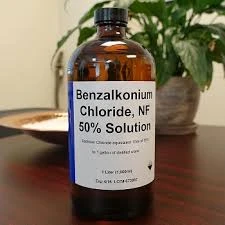Current Trends and Pricing Analysis of Poly Aluminum Chloride in the Market
The Price Dynamics of Poly Aluminum Chloride A Comprehensive Overview
Poly Aluminum Chloride (PAC) is an essential coagulant widely used in water treatment, paper manufacturing, and various industrial applications. Over recent years, the price of PAC has experienced fluctuations influenced by several key factors. Understanding these dynamics can empower businesses and consumers alike to make informed decisions regarding the procurement and usage of this crucial chemical.
The Composition and Applications of Poly Aluminum Chloride
Poly Aluminum Chloride is a highly effective aluminum-based coagulant that facilitates the removal of suspended particles in water. Due to its high efficiency in purifying drinking water, wastewater treatment, and industrial processes, PAC has become a staple in municipal and industrial water treatment facilities. Additionally, its applications extend to the paper industry, where it acts as a sizing agent, and in the food industry, where it aids in water purification processes.
Factors Influencing PAC Prices
1. Raw Material Costs The price of PAC is directly influenced by the costs of its raw materials, primarily aluminum hydroxide and hydrochloric acid. Fluctuations in the availability and prices of these substances can lead to variations in PAC pricing. For instance, rising aluminum ore prices can contribute to higher production costs, subsequently reflected in PAC prices.
2. Production Capacity The manufacturing capacity of PAC producers also plays a crucial role in determining market prices. Increased demand often encourages manufacturers to enhance production capacity, which can lead to economies of scale and lower prices. Conversely, production limitations, whether due to regulatory constraints, facility upgrades, or labor issues, can tighten supply and inflate prices.
3. Demand Dynamics The demand for PAC is closely tied to the global push for clean water and environmental sustainability. As regulatory bodies worldwide enforce stricter water quality standards, the demand for effective water treatment solutions like PAC is expected to rise. This surge in demand can impose upward pressure on prices, especially if supply does not keep pace.
poly aluminum chloride price

4. Geopolitical Factors Geopolitical tensions can also impact the price of PAC. For instance, tariffs on aluminum imports can lead to increased costs for manufacturers, which are then passed on to consumers. Additionally, political instability in regions critical to the supply of raw materials can create uncertainties that affect pricing.
5. Market Competition The competitive landscape of the PAC market influences pricing strategies. In regions where multiple suppliers are vying for market share, prices may be more stable or even decrease as companies attempt to attract customers. Conversely, in markets dominated by a few suppliers, prices may be more volatile and subject to significant increases.
6. Economic Conditions Broader economic trends, such as inflation rates, currency fluctuations, and general economic health, can also impact the price of PAC. During economically challenging times, demand for water treatment chemicals may decrease, leading to lower prices. Conversely, a booming economy may drive up demand and prices.
Current Trends in PAC Pricing
As of 2023, the market for Poly Aluminum Chloride has seen notable trends due to the aforementioned factors. The increased awareness surrounding water quality and sustainability has led to heightened demand, particularly in developing nations. Additionally, fluctuating raw material prices have made the PAC market more volatile.
In response to these dynamics, manufacturers are exploring innovative production methods aimed at reducing costs without compromising the quality of the product. The integration of sustainable practices and advancements in technology are expected to play pivotal roles in shaping the future of PAC pricing.
Conclusion
Understanding the price dynamics of Poly Aluminum Chloride is vital for stakeholders across various sectors. By staying informed about the influencing factors—such as raw material costs, demand shifts, geopolitical tensions, and production capacities—businesses can better navigate the complexities of the market. As the world continues to prioritize clean water and sustainable practices, the significance of PAC in achieving these goals will undoubtedly grow, influencing its pricing in the years to come. Whether you're a manufacturer, water treatment facility operator, or a consumer, being aware of these trends will help you make better strategic decisions.
-
2 Phosphonobutane 1,2,4 Tricarboxylic Acid (PBTCA): Superior Scale & Corrosion InhibitorNewsAug.31,2025
-
Dodecyldimethylbenzylammonium Chloride: High-Purity DisinfectantNewsAug.30,2025
-
2-Phosphonobutane-1,2,4-Tricarboxylic Acid: Scale & CorrosionNewsAug.29,2025
-
Premium Isothiazolinones | Broad-Spectrum Biocidal SolutionsNewsAug.28,2025
-
LK-319 Special Scale And Corrosion Inhibitor For Steel Plants: Advanced Solutions for Industrial Water SystemsNewsAug.22,2025
-
Flocculant Water Treatment: Essential Chemical Solutions for Purification ProcessesNewsAug.22,2025





